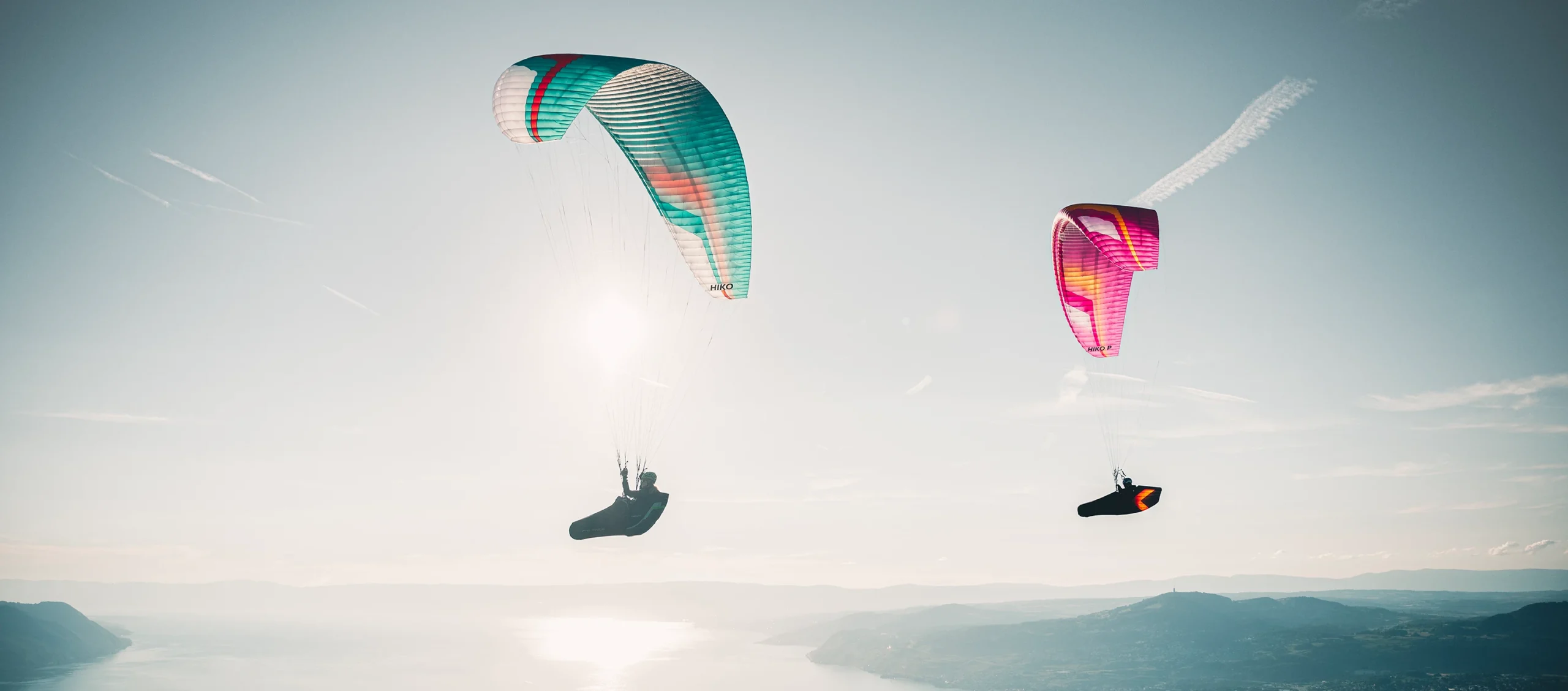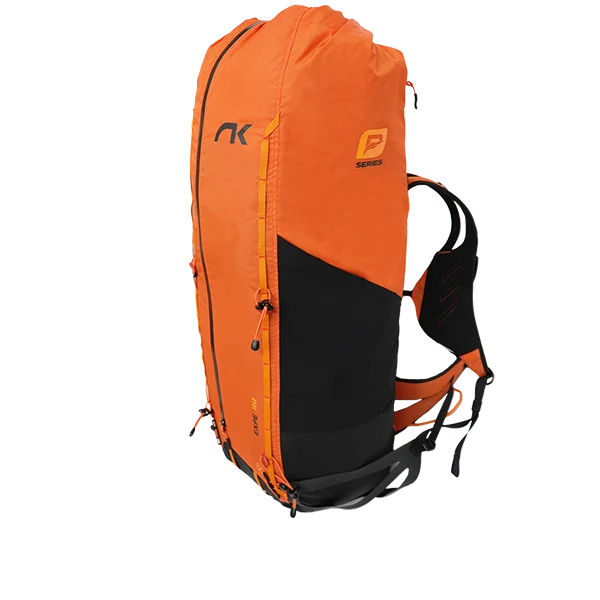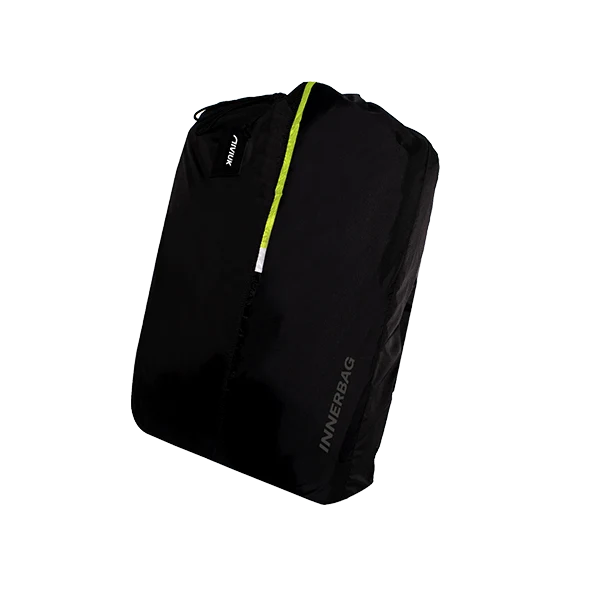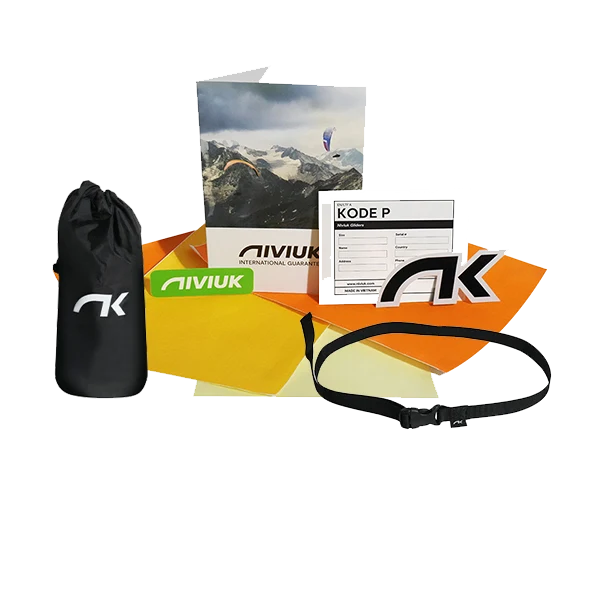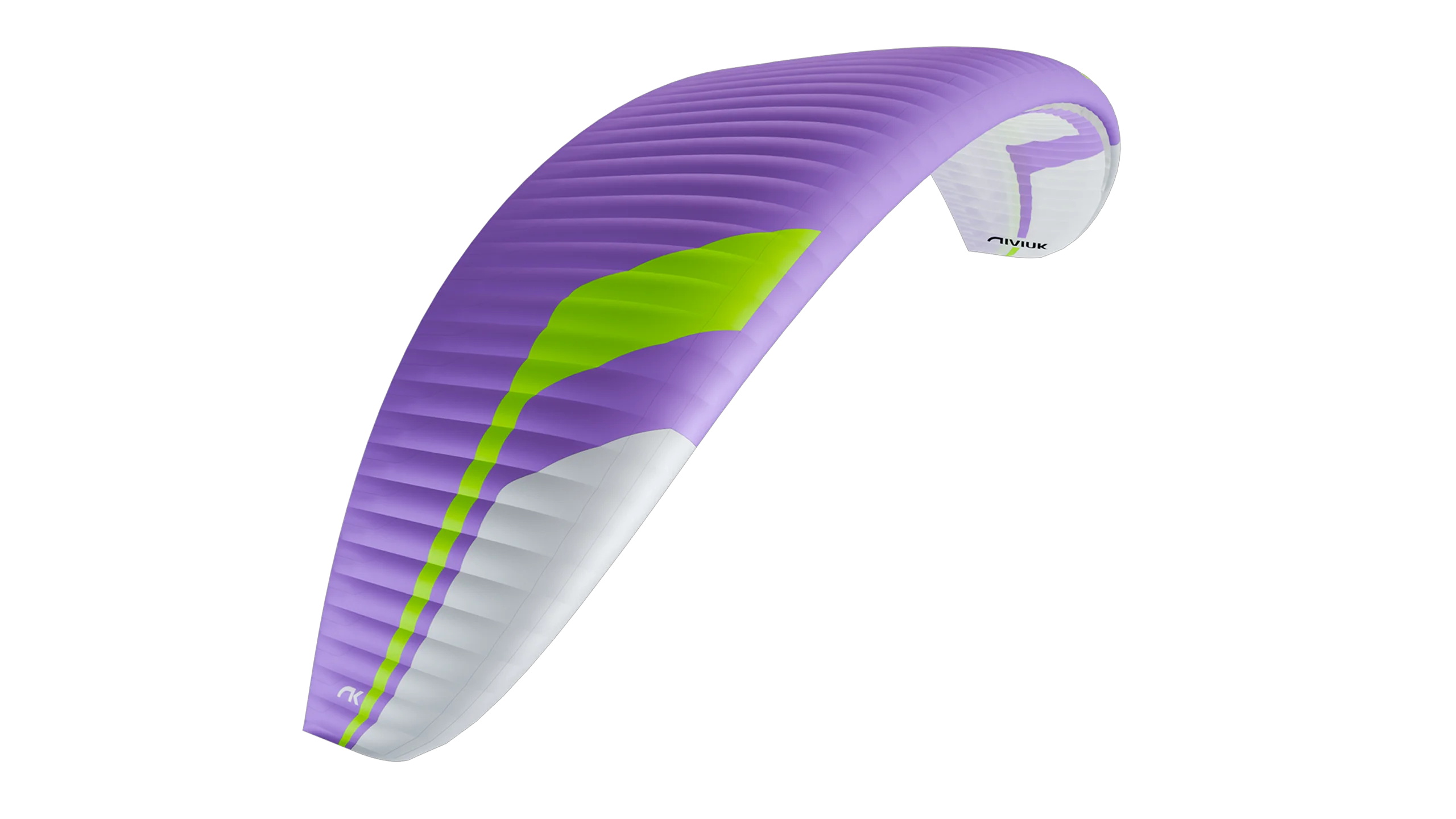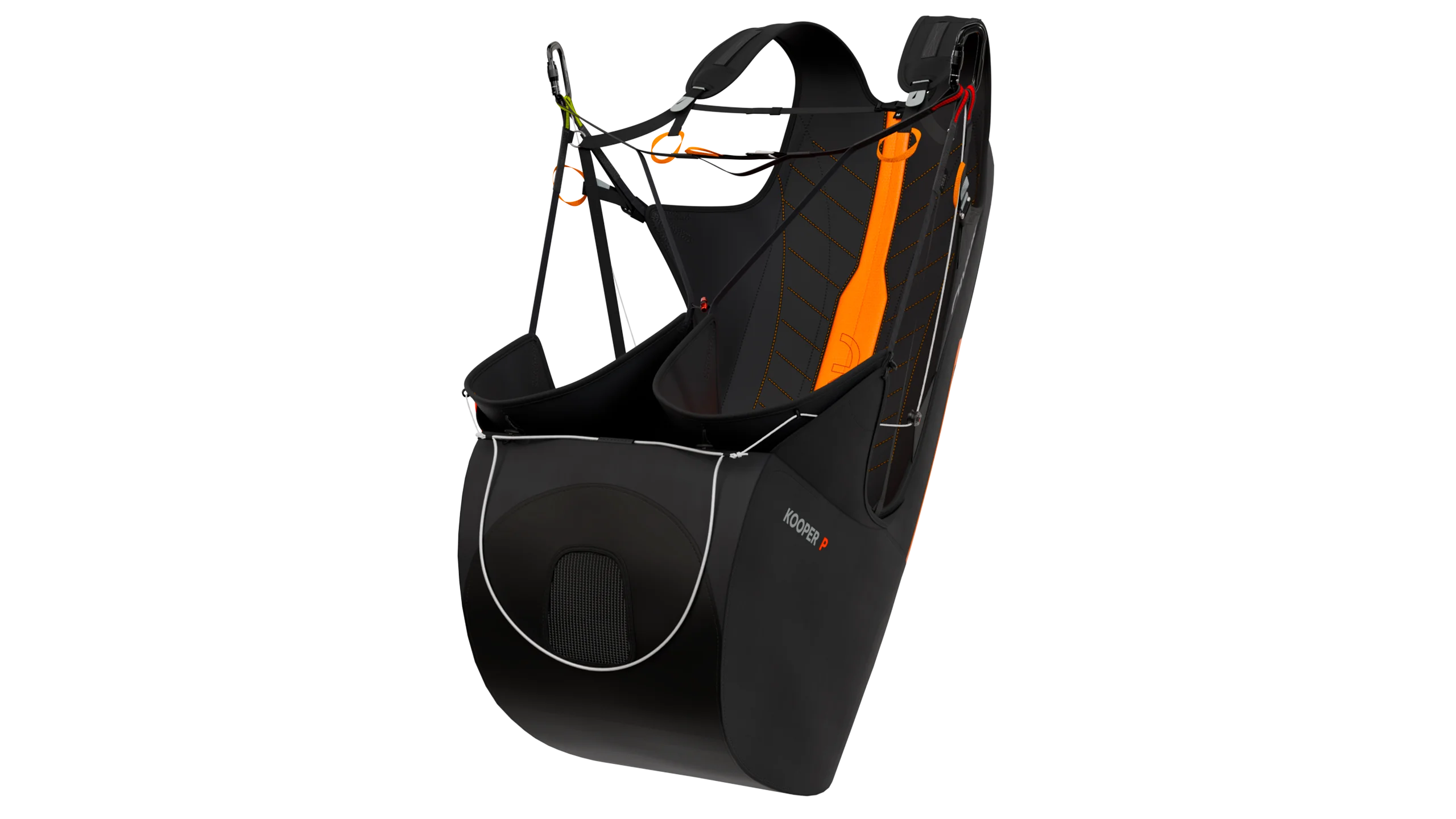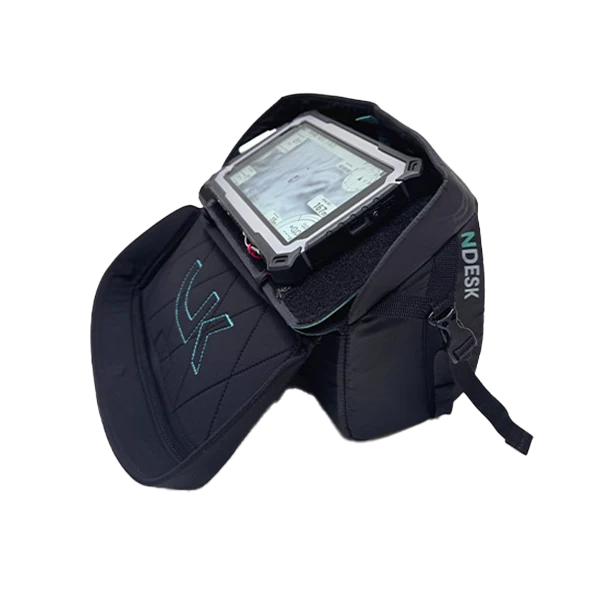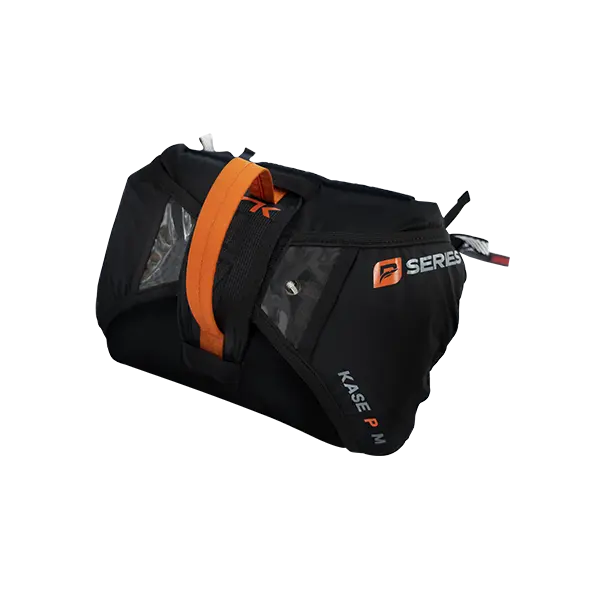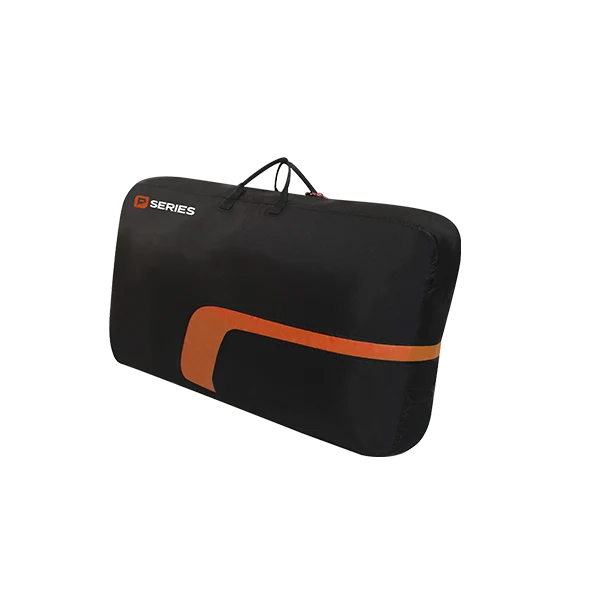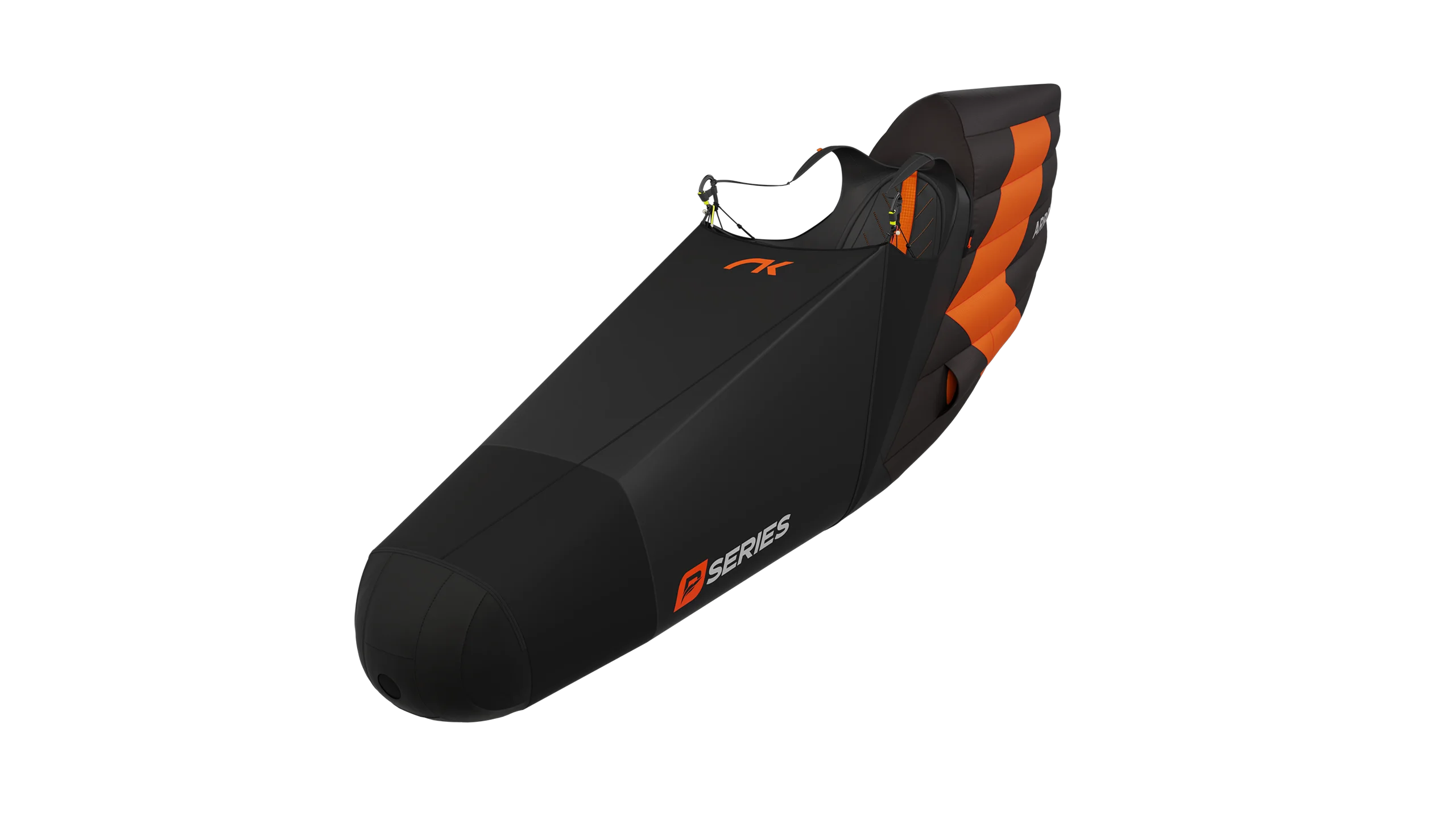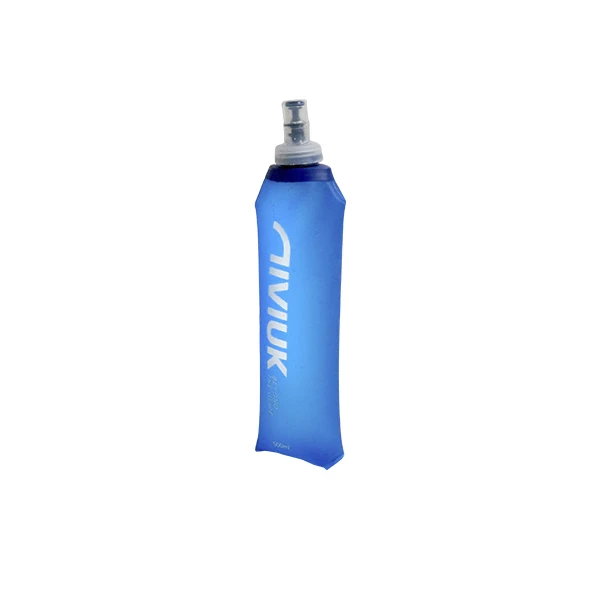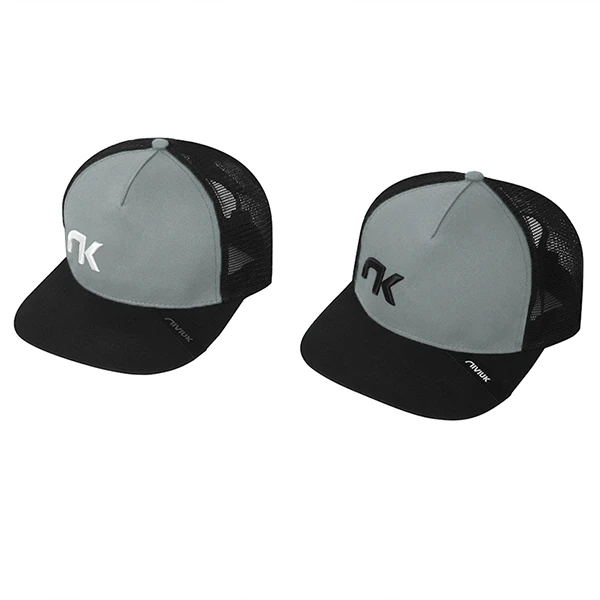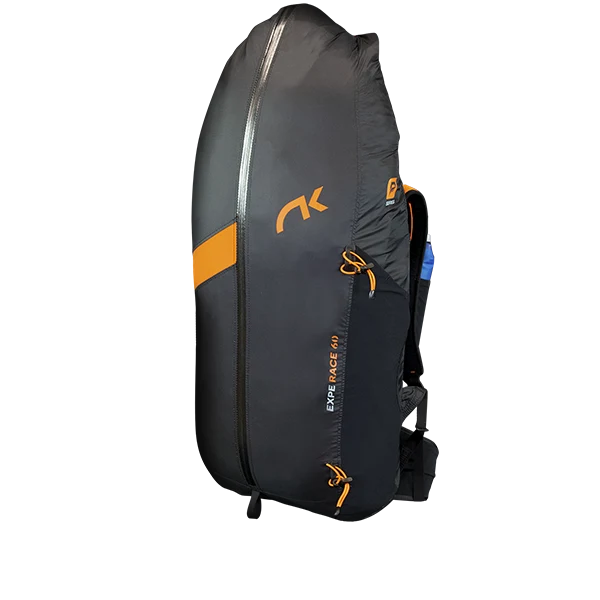Hiko P
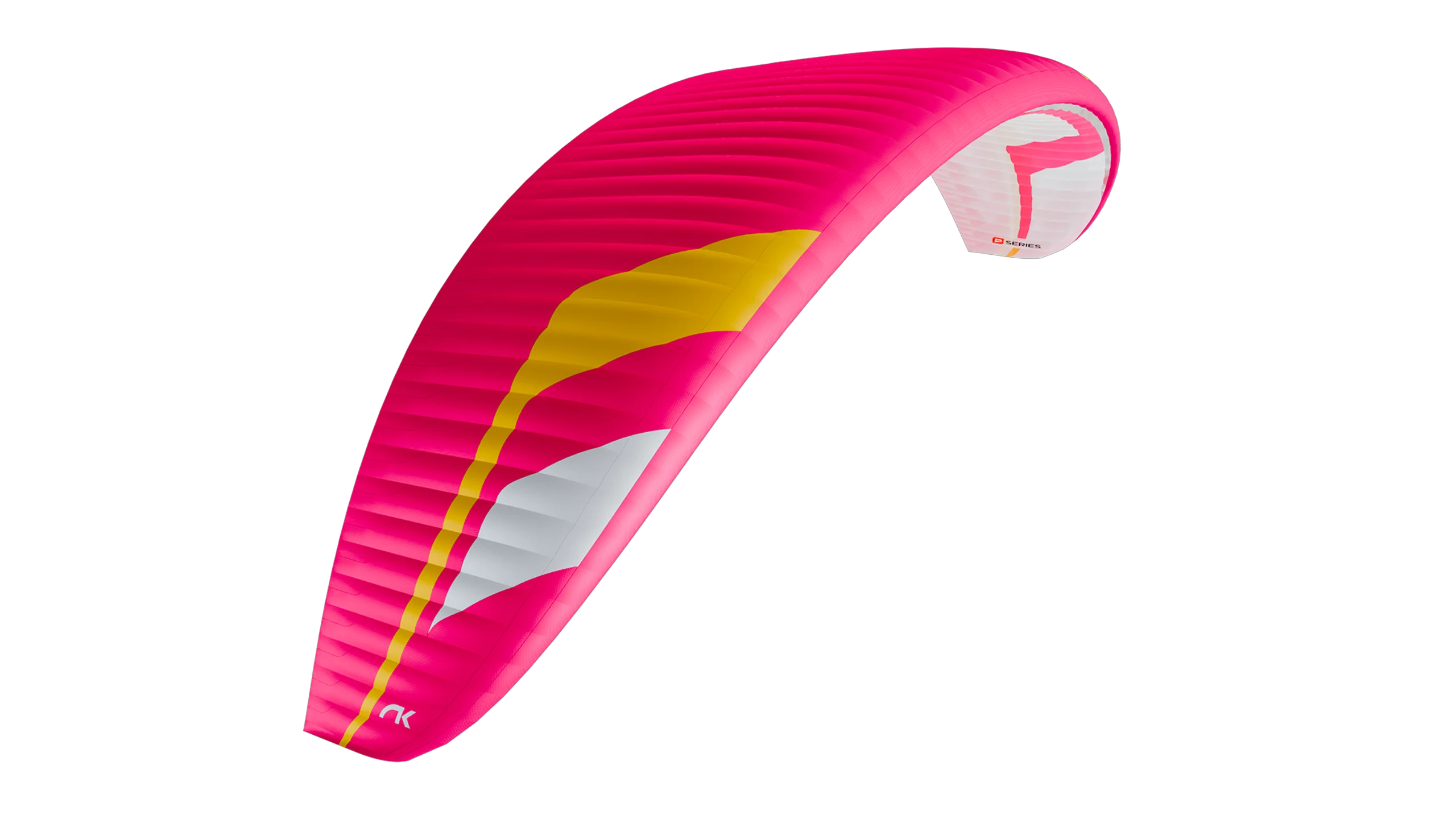
The Hiko P is an intermediate and ultra-light EN B wing – an all-rounder for a wide range of pilots. It will accompany you in the transition from paragliding training to your first XC flights. Thanks to the combination of the lightest materials, the IKS 1000 connection system and a weight-optimised internal structure, it is also the ideal glider for hike and fly. It offers great confidence building and excellent performance, to start new adventures and improve your skills.
From 2.99 kg.
Progression
Continue progressing in flying by improving your skills and gain confidence in every flight. The Hiko P is perfect for those who have just finished their training.
Hike & fly
The lightweight model is perfect for hike & fly adventures. Its compact and lightweight design makes it easy to carry, allowing you to enjoy exciting flights in remote and hard-to-reach places.
Cross-country
Take your first steps into long distance flying with confidence, thanks to this intermediate EN B wing that will allow you to experience performance for the first time, but with safety and control.
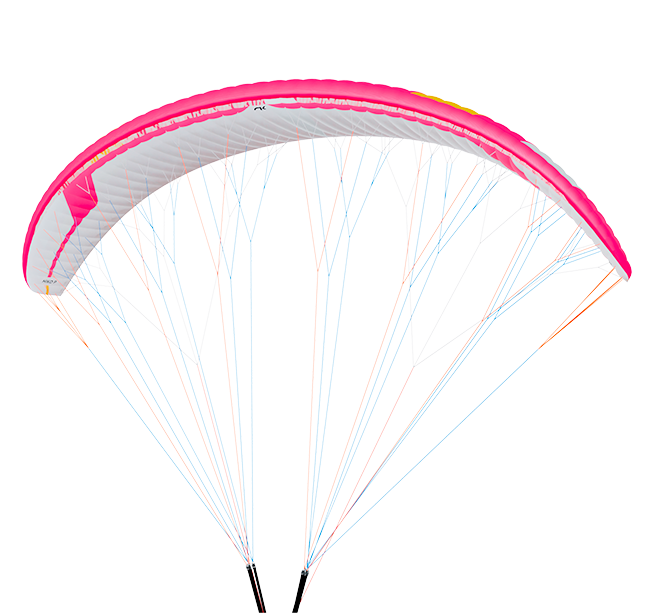
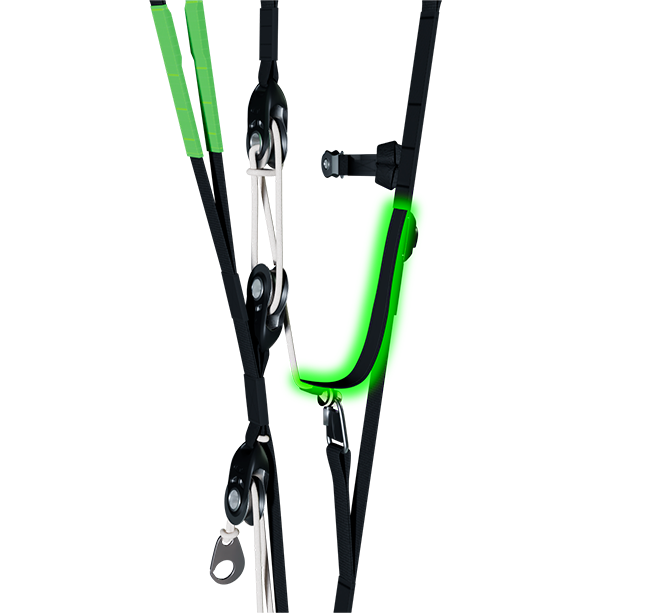
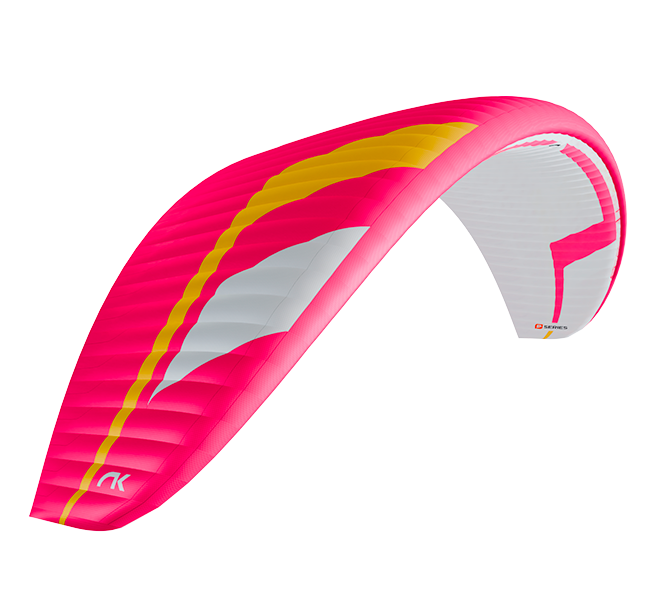





3DL technology is an adjustment of the fabric at the leading edge of the wing to control the ballooning and the creases that are generated by the curvature in this area. The leading edge is then divided into sub-panels which are sewn into each of the cells at the front of the paraglider. As a result, the leading edge of the wing is perfectly tensioned, which benefits the wing in performance and durability.
A good comparison is a rugby ball. In order to produce its characteristic oval shape without creases, its cover is made of several panels – not of just one piece.
The application of this innovation, in conjunction with the 3DP, is key to converting the perfect shape from 2D to 3D.
The RAM Air Intake system is based on the inward orientation of the air inlets in the profile so that they allow an optimum internal pressure at all angles of attack.
The result? Having greater internal pressure means better buffering of turbulence, greater consistency of the profile shape across the speed range. Excellent handling at low speed is achieved by allowing the pilot to extend the braking limit, so there is a lower risk of collapse and consequently, greater control and stability.
RSD (Radial Sliced Diagonal) technology is a reinvention of the wing’s internal structure. It incorporates independent and efficiently oriented diagonal ribs, which follow the direction of the cloth. This improves the strength, reduces weight and minimises deformation.
These days, in order to improve stress distribution and reduce the number of attachment points and lines, most wings have these diagonal ribs, which are connected from the attachment points to the adjacent profiles.
In conventional diagonal ribs, loading and unloading cycles away from the highest strength axis of the cloth result in a loss of shape, which reduces the cohesion of the wing and therefore aerodynamic efficiency.
This technology seeks to implement the best orientation of the cloth on each panel according to its location on the leading edge. If the cloth pattern is correctly aligned with the load axes, the cloth suffers less deformation flight after flight, so the leading edge maintains its shape better and remains stronger over time.
The design of our paraglider and paramotor wings has evolved a lot over the years, with a positive and specific focus on the leading edge.
Thanks to this technology and 3DL, a perfect modelling of the panels and an exact representation from 2D to 3D is achieved.
The IKS (Interlock System) is a system to connect the risers with different parts of the wing, such as the lines, the harness or the parachute. This technology stands out for its innovation in lightness, optimising both the glider and the equipment in general, without compromising efficiency or the level of safety.
Niviuk has developed three variants: the IKS 1000, the Easy IKS 2500 and the IKS 3000, each intended to connect different parts of the paraglider.
✓ IKS 1000: risers to lines
The IKS 1000 is designed to connect risers to the lines. It can carry up to 1055 kg, which is far more than the 550 kg of the classic 3 mm maillons, but weighs much less. This makes it an essential part of our entire range of P Series (plume/light) wings, which already come with this technology as standard.
✓ Easy IKS 2500: risers to harness
The Easy IKS 2500 is a lightweight attachment system designed to connect the risers to the harness. It can carry up to 2673 kg and is made of Dyneema, making it very strong and durable. It is the perfect ultra-lightweight alternative to the twist-lock aluminium carabiner (with a maximum load of 2000 kg). The design and application of this connector makes it ideal for mountain harnesses and wings, and light flying gear.
Watch here the video tutorial with the user manual to learn how to use the Easy IKS 2500.
Download the Easy IKS 2500 certification report here.
✓ IKS 3000: parachute to harness
Finally, the IKS 3000 is used to connect the parachute to the harness. It can also be used to connect the risers to the harness, as an alternative to the Easy IKS 2500. It can carry up to 2960 kg, making it an ultra-light alternative to the 7 mm maillon (which can carry 3125 kg) or the twist-lock aluminium carabiner (with a maximum load of 2000 kg). The design and application of this connector is ideal for mountain wings and lightweight equipment.
Nitinol is a combination of 50% nickel and 50% titanium. The incorporation of Nitinol rods in the profile increases the performance of the wing, especially in three areas:
- Compared to nylon rods, the weight of the wing is reduced by 13%.
- Nitinol has two essential characteristics: shape memory and enormous elasticity. As a result, the rods retain their optimum shape even after an ultra-compact or incorrect folding, so that the wing is not deformed. This will always be the case unless the radius at the point of curvature is less than 1 cm.
- The leading edge shape is much more rigid and uniform which results in a much more consistent and progressive inflation and therefore an easier take off. The profile is taut at all times, without creases, and fully optimised for all flight phases.
In addition, the rods have a plastic protector at their ends to prevent any damage to the fabric of the wing.
Nitinol is now featured in all our wings.
The new riser-integrated C2B system allows this 3-liner to be flown as if it were a 2-liner, which has increased comfort. This allows the glider to be flown and steered without degrading its profile shape, even at high speeds.
Based on the profile of our renowned Ikuma P wing, it offers remarkable pitch stability. Its advanced design provides high performance, absorbing turbulence efficiently and making the flight much smoother and more comfortable.
The Hiko P is supplied with the IKS 1000 as standard. This is a lightweight means to connect the risers to the lines. The system can hold up to 1,055 kg, which is well above the 550 kg of the classic 3 mm carabiner but weighs much less. This reduces the overall weight of the equipment while ensuring safety and durability.
Unsheathed Pro Dry lines are waterproof and reduce the overall weight of the equipment.
The mini-ribs are integrated directly into the trailing edge, with special slots to incorporate them into the wing seam, achieving a cleaner profile, eliminating external seams and protecting them from wear and tear when in contact with the ground.
The distribution of the Nitinol rods on the leading edge has been simplified and optimised to maintain the glider’s lightness, durability and compactness during folding.
The application of RAM technology ensures that the internal pressure of the wing is optimal and that the profile maintains its ideal shape in all flight conditions.
| 20 | 22 | 24 | 26 | 28 | |||
|---|---|---|---|---|---|---|---|
| CELLS | NUMBER | 55 | 55 | 55 | 55 | 55 | |
| ASPECT RATIO | FLAT | 5,5 | 5,5 | 5,5 | 5,5 | 5,5 | |
| PROJECTED | 4,18 | 4,18 | 4,18 | 4,18 | 4,18 | ||
| AREA | FLAT | m² | 20,5 | 21,8 | 23,8 | 25,8 | 27,8 |
| PROJECTED | m² | 17,51 | 18,62 | 20,33 | 22,04 | 23,75 | |
| SPAN | FLAT | m | 10,62 | 10,95 | 11,44 | 11,91 | 12,37 |
| CHORD | MAXIMUM | m | 2,38 | 2,45 | 2,56 | 2,66 | 2,77 |
| LINES | TOTAL | m | 220 | 227 | 238 | 248 | 258 |
| MAIN | 2-1/3/2 | 2-1/3/2 | 2-1/3/2 | 2-1/3/2 | 2-1/3/2 | ||
| RISERS | NUMBER | A-A’/B/C | A-A’/B/C | A-A’/B/C | A-A’/B/C | A-A’/B/C | |
| SPEED-BAR | mm | 145 | 145 | 180 | 180 | 180 | |
| GLIDER WEIGHT | kg | 2,99 | 3,14 | 3,32 | 3,51 | 3,67 | |
| TOTAL WEIGHT IN FLIGHT | MIN-MAX | kg | 50-75 | 65-85 | 75-95 | 85-105 | 95-115 |
| CERTIFICATION |
EN/LTF B
|
EN/LTF B
|
EN/LTF B
|
EN/LTF B
|
EN/LTF B
|
The total weight of the wing may differ ±2% due to variations in the weight of the fabric supplied by the manufacturers.
Hiko P
It contains an 8-digit code that, when entered in the MyNiviuk section, can be used for product registration, to carry out procedures and request maintenance.


